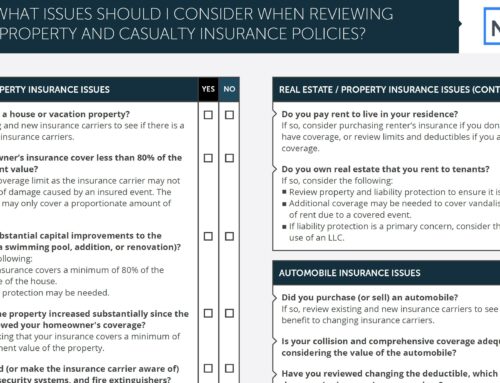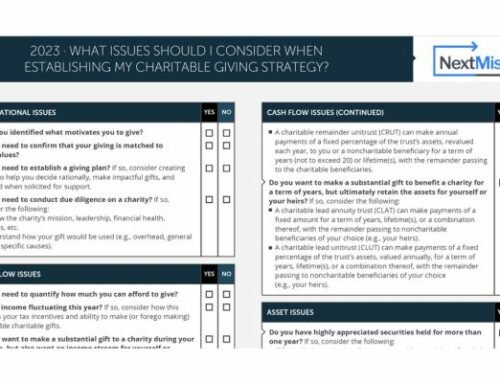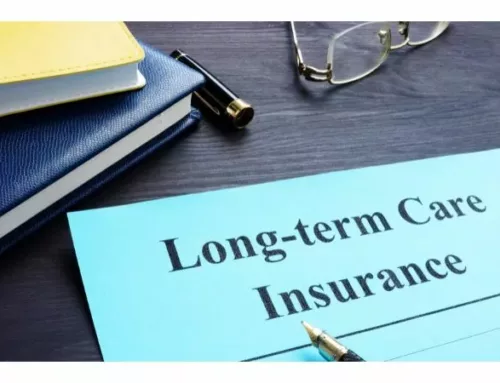SECURE Act 2.0
Congress passed the Omnibus Spending Bill on December 23, 2022. Included in the monstrous 4,000+ document were numerous changes to retirement savings accounts collectively known as SECURE Act 2.0 (Setting Every Community Up for Retirement Enhancement Act). It builds on the original SECURE Act, which was signed into law in December 2019.
Admittedly, most of these are small changes. They don’t rise to the same level of the elimination of stretch IRAs in the original SECURE Act. That doesn’t mean you shouldn’t be aware of the changes and how you it might impact your planning.
Here’s the TLDR Summary of this post and most impactful SECURE Act 2.0 provisions:
- Pushed back the age for starting required minimum distributions (RMDs) to 73 for those born between 1951 and 1959 and to 75 for those born in 1960 or later
- Tax credits for military spouse employers
- Reduced the penalty for missing a Required Minimum Distribution (RMD)
- Employer matches to Roth accounts
- Eliminates RMD requirements from employer Roth accounts
- Increased the allowed contribution to a Qualified Lifetime Annuity Contract (QLAC)
- Increased retirement plan catch-up contributions for those aged 60-63 starting in 2025
- Allows a 529 to Roth IRA rollover starting in 2024
- Allows for a $50,000 IRA Charitable Rollover to a Charitable Gift Annuity or Charitable Remainder Trust
- Student Loan Debt “Matching”
1. Pushed back the age for starting required minimum distributions (RMDs)
The SECURE Act 2.0 extends the required minimum distribution (RMD) age from 72 to 73 for those born between 1951 and 1959. For those born in 1960 or later, the age is extended to 75. RMDs are the minimum amount that must be withdrawn each year based on the owner’s age. This applies to certain retirement accounts such as traditional IRAs, 401Ks, and Thrift Savings Plan. The purpose of RMDs is to ensure that retirement accounts are eventually distributed and taxed. This prevents them from being used as tax-deferred savings vehicles indefinitely. The extension could allow for increased tax savings options by giving you an additional year (or 3) to perform Roth conversions or take distributions to draw down the account before it becomes mandatory.
2. Tax credits for military spouse employers
There is a special provision for military spouse employers who offer retirement plan participation with immediate vesting or access within 2 months of hiring. Employers can receive a tax credit of up to $500 for each military spouse. This benefit will hopefully incentivize employers to offer retirement plan access to military spouses who often change jobs before they have met the requirements to fully participate in a company’s retirement plan.
3. Reduced the penalty for missing a Required Minimum Distribution (RMD)
The SECURE Act 2.0 reduces the penalty for missing an RMD from 50% to 25%. If an individual fails to take the required minimum distribution from their retirement account, they were typically subject to a penalty equal to 50% of the amount that should have been withdrawn. Starting in 2023, he SECURE Act 2.0 reduces this penalty to 25%. It further reduces the penalty to 10% if the RMD is fixed within the “correction window.” This change is intended to provide relief to individuals who may have missed an RMD due to unforeseen circumstances.
4. Employer matches to Roth accounts
The new law allows employer matching contributions to be made to a Roth 401(k) or Roth 403(b) account. Currently, employer matching contributions can only be made to a traditional 401(k) or 403(b) account, which are funded with pre-tax contributions and are taxed as ordinary income when withdrawn. The SECURE Act 2.0 would allow employers to make matching contributions to a Roth 401(k) or Roth 403(b) account, which are funded with after-tax contributions and are tax-free when withdrawn if certain conditions are met. This change is intended to give employees the option to receive their employer’s matching contributions in a tax-free account, rather than a traditional account that is taxed as ordinary income when withdrawn. Any employer money contributed to a Roth will be reflected as income to the employee for current-year tax purposes.
5. Eliminates RMD requirements from employer Roth accounts
The RMD requirement for employer-sponsored Roth plans (Roth 401K, Roth 403B, Roth TSP, etc) will be eliminated in 2024. This eliminates the disparity between Roth employer plans and Roth IRAs which do not have an RMD requirement. It will allow employees who are happy with their plan to not have to roll over their accounts to Roth IRAs to avoid forced distribution. This is great because it allows for continued tax-free growth.
6. Increased the allowed contribution to a Qualified Lifetime Annuity Contract (QLAC)
The SECURE Act 2.0 increases the maximum contribution to a qualified longevity annuity contract (QLAC) to $200,000. It also eliminates the maximum percentage of an individual’s retirement plan balance that can be used. QLACs are a type of annuity that provides a guaranteed stream of income starting at an advanced age, such as 85 or 90. The purpose of a QLAC is to provide a guaranteed source of income in retirement, which can help individuals ensure that they have enough money to cover their expenses in old age. By increasing the maximum contribution to a QLAC, the SECURE Act 2.0 allows individuals to set aside more money for their retirement and provides them with the option to purchase a QLAC with a larger payout.
7. Increased retirement plan catch-up contributions for those aged 60-63 starting in 2025
The law also increases the retirement plan catch-up contributions for those aged 60 to 63 in 2025. Currently, individuals age 50 and over are eligible to make catch-up contributions, which are additional contributions above the regular contribution limit. The SECURE Act 2.0 increases the catch-up contribution limit for individuals aged 60 to 63 in 2025 from $6,500 to $10,000. This change is intended to give individuals in this age range the opportunity to save more for retirement and potentially make up for any shortfall in their retirement savings.
Additionally, catch-up contributions for higher-earning employees (currently above $145,000) must have contributions made to a Roth portion of the plan. This will require these employees to use after-tax dollars for these contributions.
8. Allows a 529 to Roth IRA rollover starting in 2024
The SECURE Act 2.0 allows for a 529 to Roth IRA rollover starting in 2024. Currently, 529 plans (education savings plans) can only be rolled over to another 529 plan or used for qualified education expenses. The SECURE Act 2.0 would allow individuals to roll over funds from a 529 plan to a Roth IRA tax-free. The lifetime maximum transfer amount is $35,000.
9. Allows for a $50,000 IRA Charitable Rollover to a Charitable Gift Annuity or Charitable Remainder Trust
The SECURE Act 2.0 creates Roth SEP IRA and SIMPLE IRA options. Currently, SEP IRAs and SIMPLE IRAs (retirement plans for small businesses) can only be traditional IRAs. Traditional IRAs are funded with pre-tax contributions and are taxed as ordinary income when withdrawn. The SECURE Act 2.0 allows individuals to open a Roth SEP IRA or SIMPLE IRA. These are funded with after-tax contributions and are tax-free when withdrawn if certain conditions are met.
10. Student Loan Debt “Matching”
In 2024, employers can provide matching retirement contributions for employees who are making student loan payments. Employees who weren’t able to pay down their loans and save for retirement will not lose the matching dollars from employers.
There are other many other more nuanced topics in the new law. These are the ones I felt had the most applicability to the broadest population. If you’d like to read more about some of the more nuanced topics like the expansion of annuities in retirement plans, improving the access to retirement plans for part-time employees, distributions for long-term care, or provisions around small business retirement plans check out this article (Link).
If you have questions about how these changes might apply to you, consider setting up a call with me. You can do that here (Link).
If you’re interested in more tax and retirement content check out this article on the retirement tax time bomb (Link).




